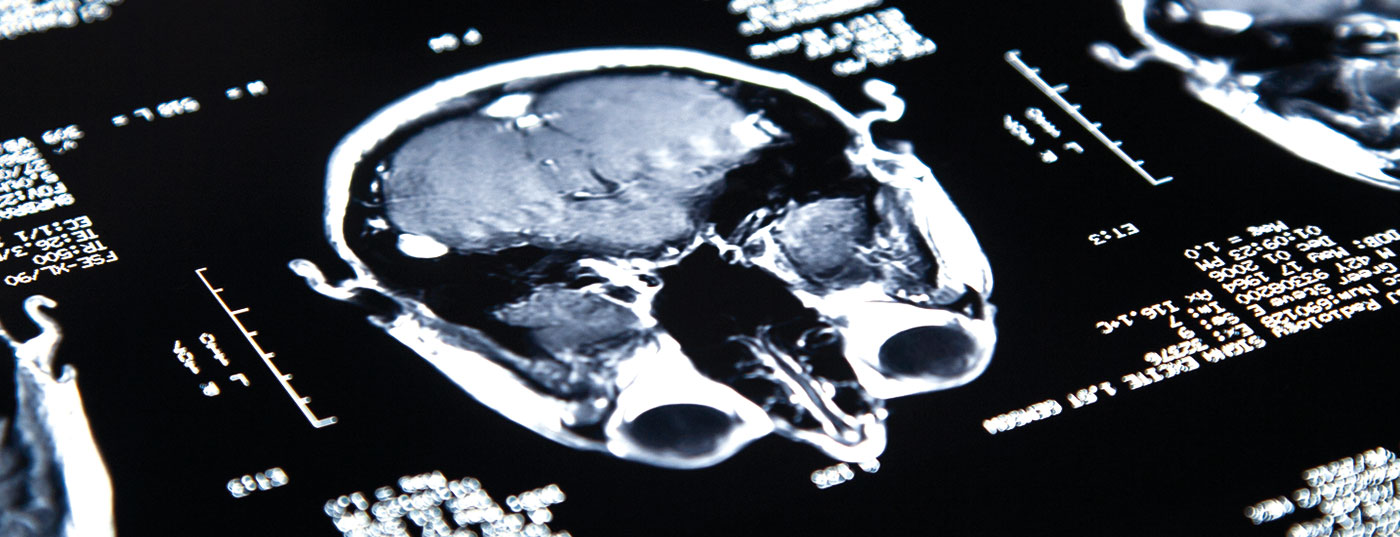While immunotherapies are rapidly gaining ground in other entities, they are still in their infancy in CNS tumors. This is due in part to the often low immunogenicity. Nevertheless, antibody-based therapies, vaccines, and CAR-T cells may also gain importance in gliomas in the coming years.
The prognosis of glioblastoma is extremely unfavorable with a 5-year survival rate of less than 5%. Accordingly, new therapeutic options are urgently needed and are being researched at full speed. At the Immuno-Oncology Congress of the European Society for Medical Oncology (ESMO), experts from Germany and Switzerland presented innovative immunotherapeutic approaches that are currently in focus. In addition to the blood-brain barrier that must be overcome, the frequent steroid use of affected individuals and the low immunogenicity of the tumors are also problematic – glioblastomas are considered immunologically “cold”. Furthermore, they exhibit high intra- as well as interindividual heterogeneity, have an immunosuppressive microenvironment, and tend to lose vulnerable antigens during the course of therapy. And such vulnerable antigens are scarce from the outset. Nevertheless, there are increasing treatment approaches based on specific antibodies, chimeric antigen receptor (CAR) T cells, and vaccination – which may in the future complement the current standard of care of surgery, radiochemotherapy with temozolomide, and possibly electrostimulation using tumor therapy fields (TTF).
Antibody-based therapies in the pipeline
Although classical antibody-drug conjugates have failed to confer a survival benefit in glioblastoma in phase III trials, coupling antibodies with agents that stimulate the immune response or agents that counteract the immunosuppressive tumor microenvironment may hold promise. This was explained by Prof. Patrick Roth, MD, coordinator of the Brain Tumor Center at the Comprehensive Cancer Center Zurich, in his lecture.
In recent years, the antibody-drug conjugate depatuxizumab mafodotin (ABT-414), which targets EGFR, has particularly excelled in glioblastoma research – making it through the final phase of clinical development. However, with sobering results. While the antibody coupled to the spindle toxin monomethylauristatin F (MMAF) was still convincing in a randomized-controlled phase II trial, the phase III Intellance 1 trial, which investigated the addition of depatuxizumab mafodotin to the standard therapy of newly diagnosed glioblastoma, had to be discontinued due to lack of survival benefit. Previously, the EORTC 1410 trial in recurrent glioblastoma with EGFR overexpression had shown an overall survival benefit with treatment with depatuxizumab mafodotin + temozolomide compared with temozolomide or lomustine therapy alone (HR 0.68, 95% confidence interval 0.48-0.95, p=0.024) – but in a highly pre-selected study population [1].
As an alternative antibody-based approach, the combination of targeted antibodies with agents designed to act directly on the immunological environment of the tumor is currently being tested. On the one hand, bintrafusp alfa (M7824) is in clinical development and, on the other hand, the focus is on so-called “immunocytokines” – specific antibodies coupled to proinflammatory cytokines. While the latter are designed to make immunologically “cold” tumors “hot” through these cytokines, the goal of bintrafusp alfa is to attenuate the immunosuppressive effect of the cancer. It involves the combination of an antibody directed against PD-L1 with a TGF (transforming growth factor)-β trap.
This could enhance the modest effect of checkpoint inhibitors in glioblastoma, it is hoped. TGF-β is one of the most potent immunosuppressive cytokines secreted in high amounts by glioma cells. If this is intercepted, the immunogenicity of the tumor could be increased. Initial preclinical data on bintrafusp alfa in combination with radiotherapy were recently published [2]. These showed prolonged survival of mice and a synergistic effect with irradiation. However, early clinical data in recurrent glioblastoma were less promising, in part because of unfavorable safety signals [3].
Also in early clinical trials is the immunocytokine L19-TNF. The antibody L19 is directed against the antigen EDB, which is expressed almost exclusively in the tumor environment, and is coupled to the proinflammatory cytokine TNF-α. Through this, the developers hope to achieve a dual effect via two mechanisms: direct tumor necrosis by TNF-α and activation of the immune system. In preclinical studies in mice, synergistic activity was observed with temozolomide and lomustine, but no benefit was observed with additional administration to checkpoint inhibitors. Recruitment for the first GLIOMOON clinical trial was recently completed, according to Prof. Roth. This investigates L19-TNF monotherapy in recurrent glioblastoma. Two additional trials are planned to test L19-TNF in the first line of therapy in addition to standard treatment (GLIOSUN) and in combination with lomustine in the relapsed setting (GLIOSTAR). Initial data collected in humans show radiological change in the tumor relatively shortly after administration of the new agent, as well as a decrease in tumor perfusion [4].
Vaccination strategies for gliomas
Not only are antibody-based approaches in the glioma immunotherapy pipeline, but also vaccine-based strategies. These were presented by Prof. Dr. med. Michael Platten, Director of the Neurological Clinic at the University Hospital Mannheim, at the Immuno-Oncology Congress . Here, there are a variety of targets, including the WT-1, survivin, and Sox2 antigens. All efforts to vaccinate against gliomas aim to elicit a sufficient T-cell response to make the tumor recognizable to the immune system and subsequently destroy it. According to Prof. Platten, the subclonal development of gliomas is important here – that is, rapid mutation under chemotherapy, which, however, only occurs in subclones. This leads to a high intratumoral heterogeneity and, among other things, to a high resistance to checkpoint inhibitors. Therefore, targeting clonal neoantigens of driver mutations, such as IDH1 and H3.3, is particularly promising, he said. This is because these are located at the origin of tumor development. Even if the tumor evolves subclonally, an agent directed against IDH1 or H3.3 will attack at the root because these mutations are present in all subclones.
In his presentation, Prof. Platten presented some studies on vaccines targeting IDH1 and H3.3. For example, in the multicenter phase I NOA16 trial in IDH-mutated anaplastic/Grade IV gliomas, eight vaccines directed against IDH1 were administered after first-line therapy [5]. Subsequently, a T-cell as well as an antibody response could be detected in most patients. The 3-year PFS rate was 63%, and the 3-year OS rate was 84%, with further analyses to follow [6]. Particularly exciting and quietly hopeful: the specific immune response correlated with prognosis. Currently, we are also investigating whether the addition of a checkpoint inhibitor in recurrence provides additional benefit. Similar to vaccines directed against IDH1, other vaccines are in early clinical trials.
And what about cellular therapies?
With the success of CAR-T cells primarily in hematologic malignancies, the question arises as to whether they might also have utility in glioblastoma. So far, only drugs directed against CD-19 have been approved, but research into cellular therapies with other targets is in full swing – also in glioblastoma. Challenges here are in particular the non-negligible toxicity as well as the frequent loss of antigen in the course of therapy. Some of the targets currently in focus were presented at the congress by Prof. Denis Migliorini, MD, from the University Hospital of Geneva: ILI3Rα2, HER2, EGFRvIII, CSPG4 and others. Some successes of early studies also came up. For example, CAR-T cells directed against HER2 showed clinical benefit in 8/17 patients, and a complete response was achieved in one patient with multifocal glioblastoma using ILI3Rα2-directed CAR-T cells [7]. Unfortunately, however, tumor escape occurs in most cases, making new strategies urgently needed.
Such a novel strategy represents multivalent CAR T-cell therapies. The idea is to attack multiple targets as part of the treatment – also to prevent immune escape. On the one hand, it is possible to infuse differently modified CAR-T cells in parallel, and on the other hand, CAR-T cells expressing multiple or combined antigen receptors can be generated. Such innovative approaches could also potentially allow personalization of therapy, as the infused cells can be adapted to the patient’s antigen profile. These approaches, which are being researched in Geneva, are currently still part of the future, but in a few years they could help to take the tumor heterogeneity of glioblastoma into account in therapy.
The bottom line is that the clinical implementation of immunotherapeutic treatment methods for glioblastoma still seems to be a long way off – and yet it is a glimmer of hope on the horizon of this serious disease that cannot be ignored.
Source: session “New indications in CNS tumours” at the European Society for Medical Oncology (ESMO) Immuno-Oncology Congress, Dec. 8, 2021, virtual realization.
Literature:
- Van Den Bent M, et al: INTELLANCE 2/EORTC 1410 randomized phase II study of Depatux-M alone and with temozolomide vs temozolomide or lomustine in recurrent EGFR amplified glioblastoma. Neuro Oncol 2020; 22(5): 684-693.
- Lan Y, et al: Simultaneous targeting of TGF-β/PD-L1 synergizes with radiotherapy by reprogramming the tumor microenvironment to overcome immune evasion. Cancer Cell 2021; 39(10): 1388-403.e10.
- Khasraw M, et al: Bintrafusp alfa (M7824), a bifunctional fusion protein targeting TGF-β and PD-L1: results from a phase I expansion cohort in patients with recurrent glioblastoma. Neurooncol Adv 2021; 3(1).
- Weiss T, et al: Immunocytokines are a promising immunotherapeutic approach against glioblastoma. Sci Transl Med 2020; 12(564).
- Platten M, Bunse L, Wick W: Emerging targets for anticancer vaccination: IDH. ESMO Open 2021; 6(4): 100214.
- Platten M, et al: A vaccine targeting mutant IDH1 in newly diagnosed glioma. Nature 2021; 592(7854): 463-468.
- Maggs L, et al: CAR T Cell-Based Immunotherapy for the Treatment of Glioblastoma. Front Neurosci 2021; 15: 662064.
InFo ONCOLOGY & HEMATOLOGY 2022; 10(1): 22-23.











